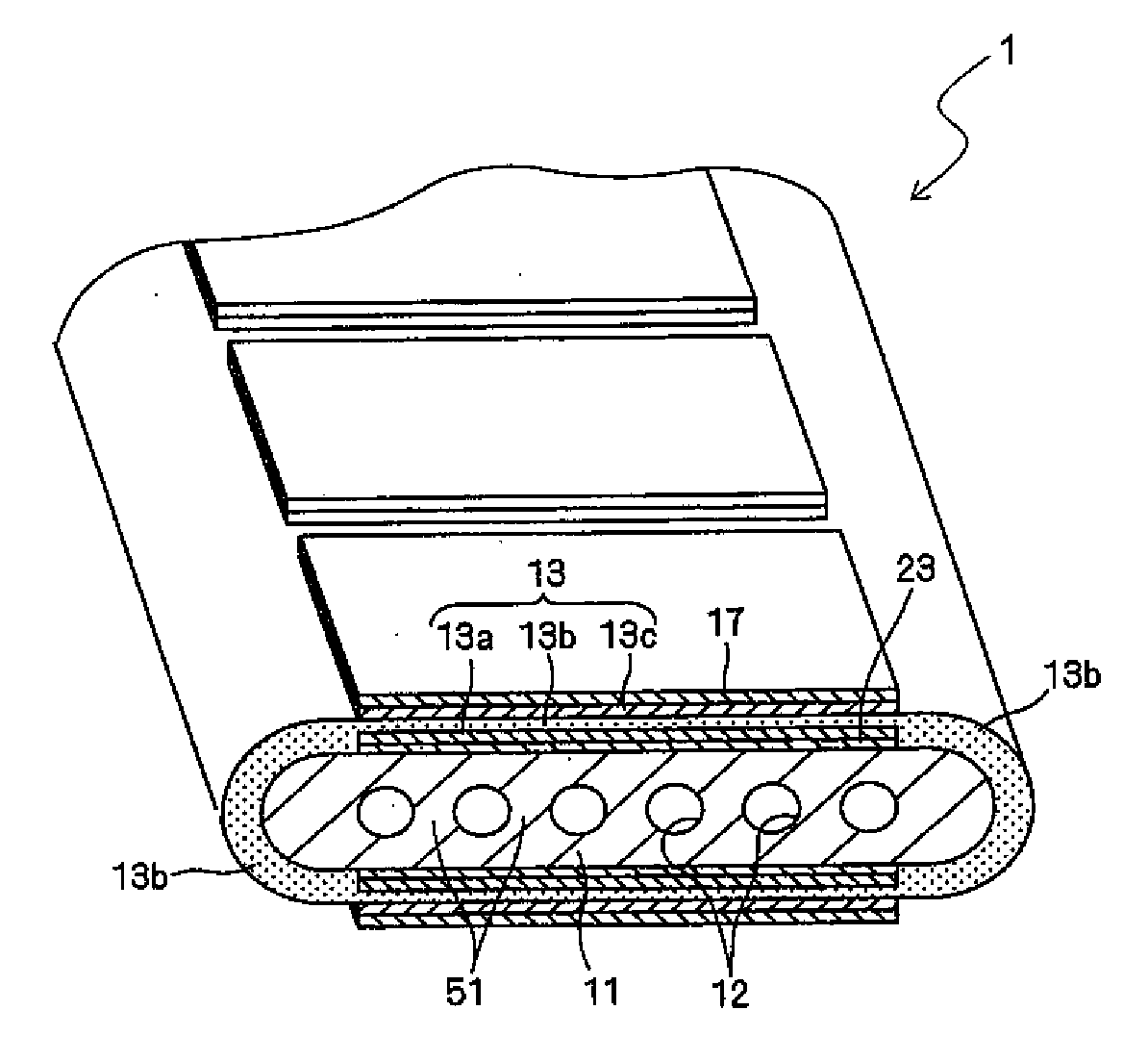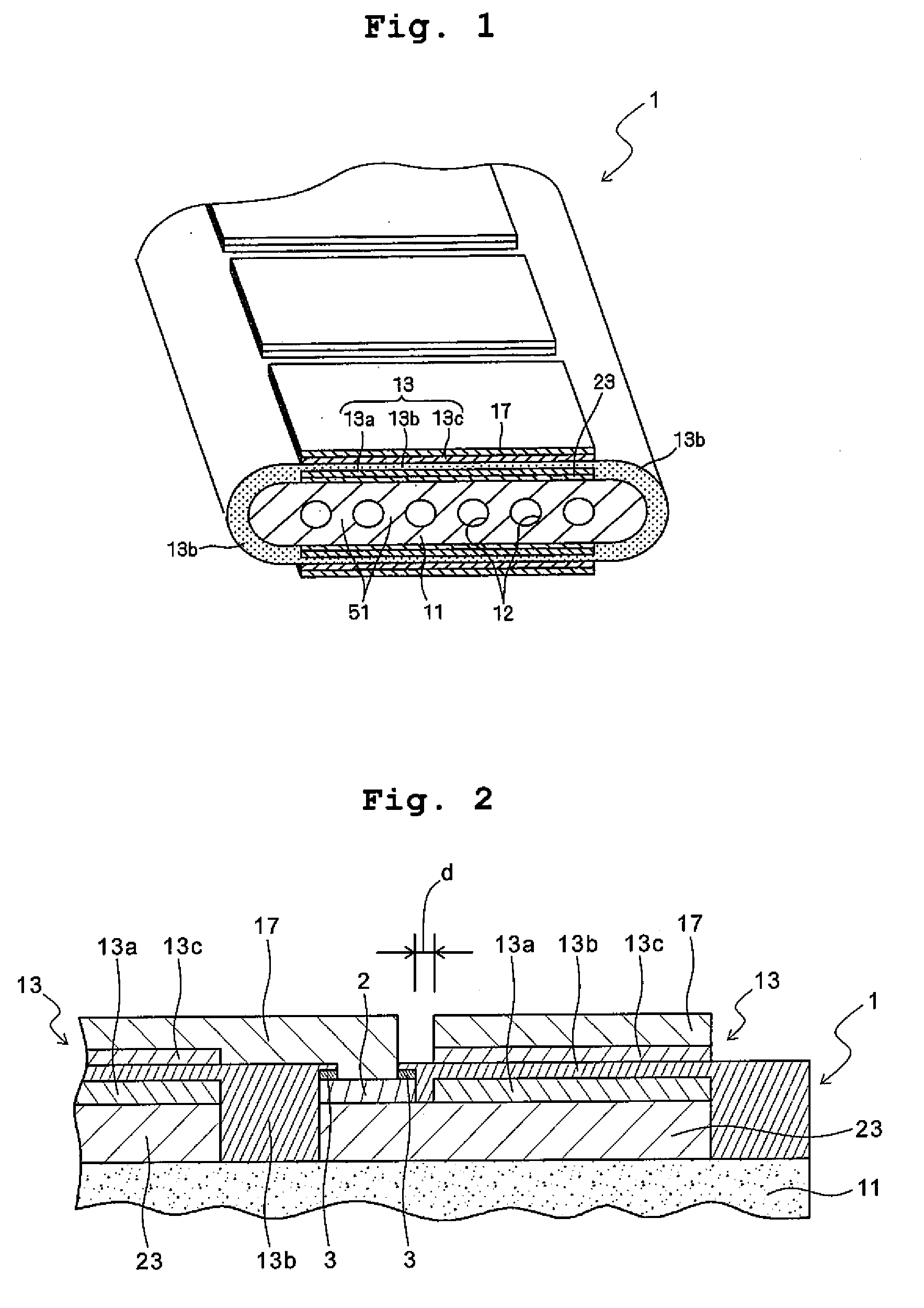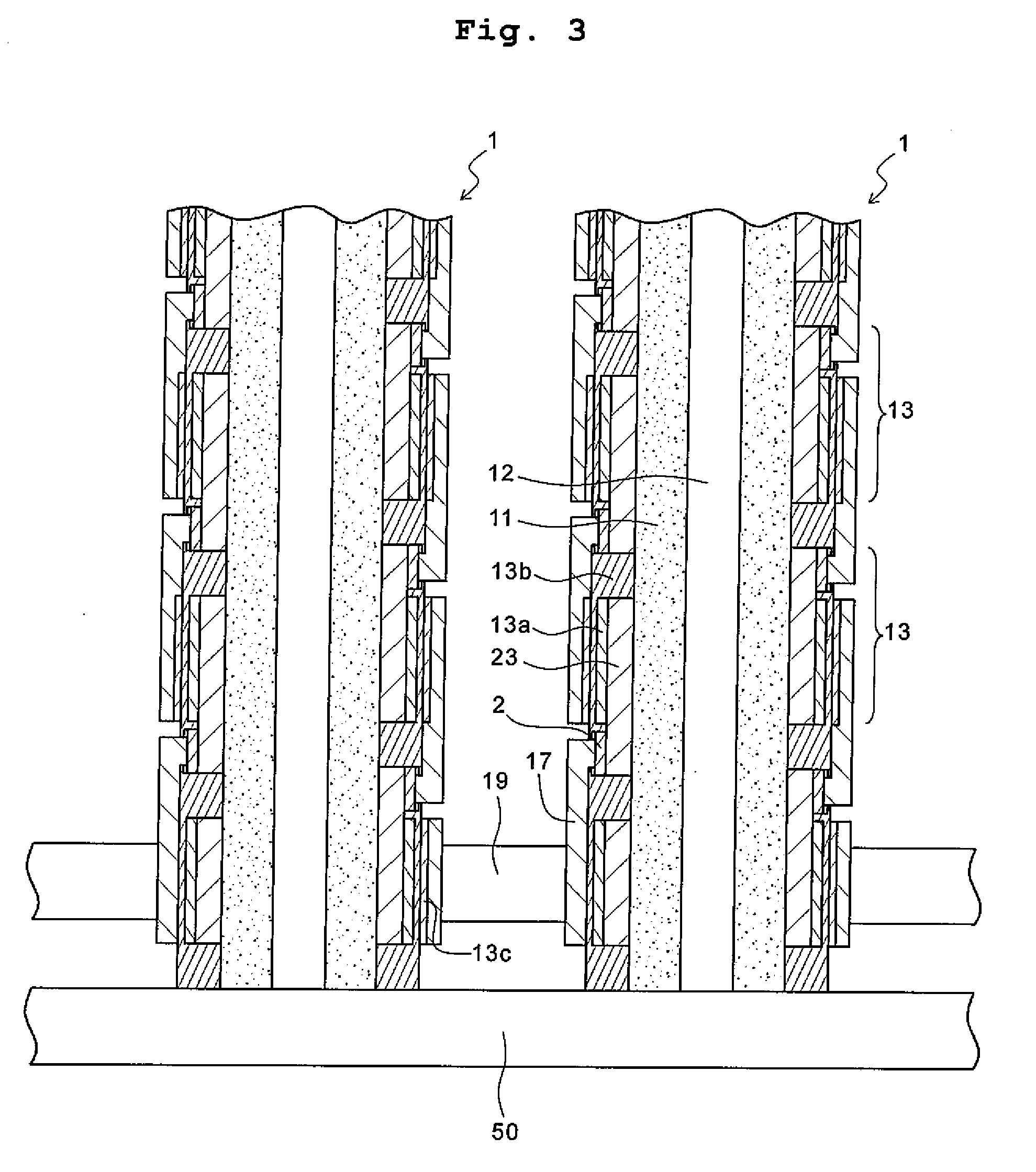Segmented-In-Series Solid Oxide Fuel Cell Stack and Fuel Cell
a solid oxide fuel cell and segmented-in-series technology, applied in the direction of fuel cell details, fuel cells, electrochemical generators, etc., can solve the problems of extreme prone to defects, achieve high reliability, reduce separation, and reduce the effect of aging
- Summary
- Abstract
- Description
- Claims
- Application Information
AI Technical Summary
Benefits of technology
Problems solved by technology
Method used
Image
Examples
Embodiment Construction
[0036]An embodiment of the segmented-in-series solid oxide fuel cell stack and an embodiment of the fuel cell of the present invention are described below in detail with reference to FIGS. 1 to 3. As shown in FIG. 1, the fuel cell stack 1 of the present embodiment comprises a hollow plate-like electrically isolated porous support body 11, and fuel cell 13. The fuel cell stack 1 is the “segmented-in-series type” in which a plurality of fuel cells 13 are arranged side by side along the longitudinal direction on front and rear surfaces of the support body 11, and these fuel cells 13 are connected in series through an intercell connection member 17, as shown in FIG. 2.
[0037]Each fuel cell 13 has a first inner electrode layer (hereinafter referred to as a “current collecting fuel electrode layer 23” in some cases) disposed on the support body 11, a current collector 2 and a second inner electrode layer (hereinafter referred to as an “active fuel electrode layer 13a” in some cases) which ...
PUM
| Property | Measurement | Unit |
|---|---|---|
| operating temperature | aaaaa | aaaaa |
| electrically-insulating | aaaaa | aaaaa |
| shape | aaaaa | aaaaa |
Abstract
Description
Claims
Application Information
 Login to View More
Login to View More - R&D
- Intellectual Property
- Life Sciences
- Materials
- Tech Scout
- Unparalleled Data Quality
- Higher Quality Content
- 60% Fewer Hallucinations
Browse by: Latest US Patents, China's latest patents, Technical Efficacy Thesaurus, Application Domain, Technology Topic, Popular Technical Reports.
© 2025 PatSnap. All rights reserved.Legal|Privacy policy|Modern Slavery Act Transparency Statement|Sitemap|About US| Contact US: help@patsnap.com



